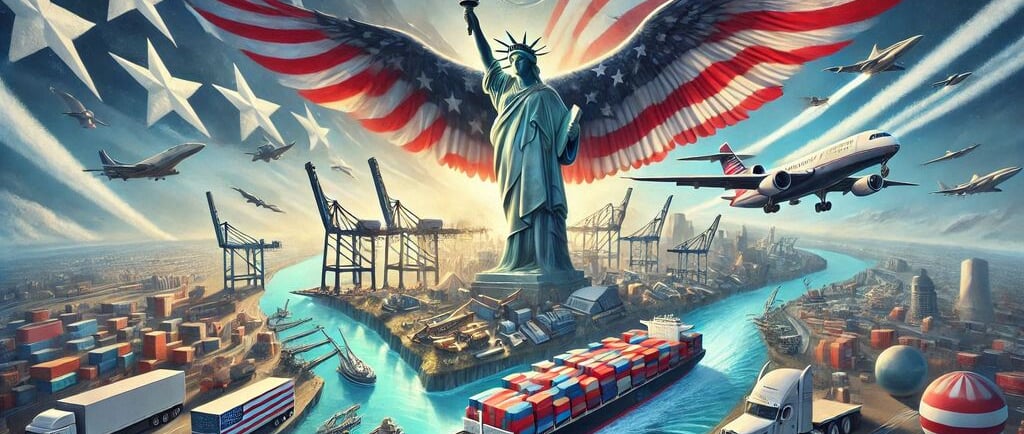Let us collaborate to foster global growth and development together.
The USA's Evolving Import Landscape: What Every Business Should Know
Explore the USA's evolving import landscape, including key trends, challenges, and opportunities for businesses. Stay ahead in global trade today.
USA
10/31/20243 min read


The USA's Evolving Import Landscape: What Every Business Should Know
Meta Description: Explore the USA's evolving import landscape, including key trends, challenges, and opportunities for businesses. Stay ahead in global trade today.
The global trading environment is dynamic, and the United States import landscape is no exception. With shifting regulations, supply chain challenges, and emerging markets, it’s crucial for businesses to understand and adapt to these changes. Whether you're a small enterprise looking to expand or a seasoned importer, this guide will help you navigate the complexities of the USA’s evolving import landscape.
Why the Import Landscape Is Changing
Economic Shifts and Market Demands
Global economic trends play a significant role in reshaping U.S. imports. With rapid technological advancements, consumers and businesses alike are prioritizing innovative products. Additionally, geopolitical factors such as trade agreements and disputes alter the flow of goods.
Increase in E-Commerce: The boom in online shopping has led to a surge in demand for imported goods, from electronics to apparel.
Focus on Sustainability: Importers now prioritize goods produced under sustainable practices, reflecting consumer preferences for ethical sourcing.
Regulatory Changes
U.S. import regulations constantly evolve, impacting how goods enter the market. Tariffs, compliance measures, and trade policies can shift depending on domestic priorities and international relationships. For instance, the ongoing U.S.–China trade tensions have prompted businesses to diversify sourcing from other regions such as Vietnam or Mexico.
Key Trends in the U.S. Import Landscape
Diversification of Supply Chains
To mitigate risks such as trade wars or pandemics, businesses are increasingly exploring alternate sourcing options. For example:
Southeast Asia has emerged as a strong alternative to China for electronics and textiles.
Latin America offers proximity advantages, particularly for industries like automotive and agriculture.
The Role of Technology
Technology has transformed how businesses manage imports. Tools like artificial intelligence (AI) and blockchain enhance supply chain visibility, minimize errors, and ensure compliance with regulatory standards. Businesses can:
Use IoT devices to track shipments in real time.
Implement automation for customs documentation, reducing delays.
Sustainability in Imports
Importers now face higher scrutiny regarding environmental and ethical considerations. Aligning with these expectations can provide a competitive edge. For instance, many businesses prioritize working with suppliers adhering to carbon reduction goals or ethical labor practices.
Challenges Businesses Face
Tariffs and Duties
Frequent changes in tariff rates, especially during geopolitical conflicts, pose challenges for importers. Higher duties can cut into profit margins, forcing companies to adjust pricing or find alternative suppliers.
Supply Chain Disruptions
The COVID-19 pandemic and global conflicts like the Russia-Ukraine war highlighted vulnerabilities in global supply chains. Issues like shipping delays, port congestion, and increased transportation costs remain persistent challenges.
Compliance Complexity
Staying compliant with regulations such as the U.S. Customs and Border Protection (CBP) requirements, including antidumping duties or import quotas, is critical. Non-compliance can result in hefty penalties, product seizures, or even damage to a company’s reputation.
Opportunities in the Evolving Import Landscape
While the challenges are significant, so are the opportunities for businesses willing to adapt.
Explore Emerging Markets:
Regions such as Africa, Eastern Europe, and Southeast Asia are becoming attractive sourcing hubs. Businesses can capitalize on competitive pricing and untapped markets.Leverage Trade Agreements:
Trade deals such as the United States-Mexico-Canada Agreement (USMCA) offer tariff benefits and reduced trade barriers for certain products.Adopt Sustainable Practices:
Importers who prioritize environmentally-friendly products can attract eco-conscious consumers and strengthen brand loyalty.
Practical Tips for Importers
Stay Proactive with Regulatory Changes
Subscribe to newsletters from agencies like the Office of the U.S. Trade Representative (USTR) to stay informed about policy updates. Regularly consult with trade compliance experts to minimize risks.
Build Resilient Supply Chains
To handle disruptions, consider:
Dual sourcing: Work with multiple suppliers for critical products.
Regional diversification: Partner with suppliers across various geographical regions to reduce dependency.
Invest in Technology
Tools such as machine learning for demand forecasting or blockchain for transaction transparency can streamline operations.
Strengthen Relationships with Freight Forwarders
Reliable logistics partners help navigate complex shipping routes, customs clearances, and unforeseen delays, ensuring smoother operations.
Real-Life Example
A mid-sized electronics retailer relying on Chinese imports faced steep tariffs during the U.S.–China trade dispute. By diversifying their sourcing to Thailand and Indonesia, and adopting AI for inventory management, they reduced costs while maintaining consistent delivery timelines. This pivot not only saved their business but also made them more resilient for future challenges.
The Road Ahead
As businesses navigate the USA's evolving import landscape, staying informed, adaptive, and innovative remains critical. Whether through technology adoption, embracing sustainability, or exploring new markets, businesses can thrive amid change.
What strategies are you considering to adapt to these shifts? Share your insights in the comments below. Don’t forget to check out our related article, “Mastering International Sourcing in 2024,” for more actionable tips to optimize your global trade operations.
Innovation
Cutting-edge solutions for industrial efficiency and productivity.
© 2024. All rights reserved.


